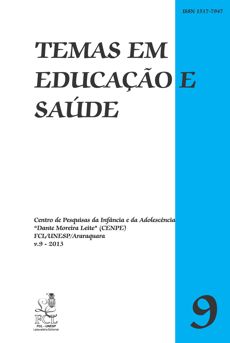Living the life
DOI:
https://doi.org/10.26673/tes.v9i0.9587Keywords:
Community integrative therapy, Rehabilitation, Chemical dependency,Abstract
This work was born of the interest to know the field of chemical dependency and the need for an interdisciplinary approach to both analysis and for specific intervention that could provide the social reintegration of addicts House Therapeutic ACAT-DF. Objective: To promote the implementation of ICT as a tool for social rehabilitation, emphasizing the importance of recognizing the potential and skills in existing addict. Methods: the wheels were made every two weeks over a period of half an hour. Throughout this time, there were dynamics that raise selfesteem and recover the lost child, presentation and reflection problems. The group members were males, ranging from 14 to 16 . Most are referred by Shelter when they are overcrowded, others by VEPEMA / DF, few by their families, and some other seek shelter for himself. Results: It was observed that the wheels led us to evaluate and conclude that low self-esteem of the group is one of the major problems to be faced. From the conversations, discussions to work the issue of prejudice and emphasize that the solutions are in the collective, the sharing, identifying with each other, respect for differences, we observed the elevation of self-esteem in the majority of participants and a improved ability to exercise the right to citizenship. Moreover, it is hoped that this experience can contribute to the formulation of public policies that actually promote the rehabilitation of individuals suffering from chemical dependency.
Downloads
Downloads
Published
How to Cite
Issue
Section
License
Os manuscritos aceitos e publicados são de propriedade da Temas em Educação e Saúde. Os artigos publicados e as referências citadas na Temas em Educação e Saúde são de inteira responsabilidade de seus autores. É vedada a tradução para outro idioma sem a autorização escrita do Editor ouvida a Comissão Editorial.







